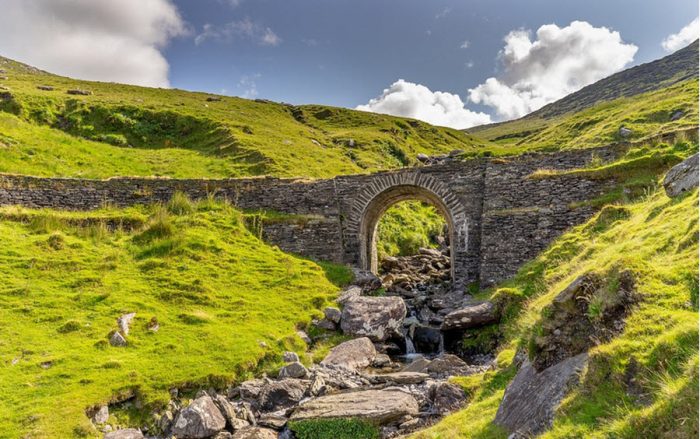Contents
The Roman Empire is renowned for its exceptional contributions in the field of architecture, engineering and urban planning. One of the most striking examples of this is the ingenious creation and utilization of aqueducts – impressive structures that symbolize the resourcefulness, cleverness, and ambition of the Roman civilization. Let’s delve into the intricate world of these impressive Roman marvels and examine their design, construction, impact on society, and continued influence in modern times.

Design and construction
In essence, an aqueduct is a water supply or navigable channel, crafted to transport water from a remote source, most often in the mountains, to where it is needed, such as urban centers or farmlands.
Contrary to common perception, not all sections of the Roman aqueducts were raised structures or bridges. A significant portion of the channels were dug beneath the soil’s surface or built into the sides of hills, and only when valleys or ravines had to be crossed, did the Romans build the iconic raised structures we typically associate with aqueducts. Constructed predominantly from stone, concrete, and brick, these structures boasted an extraordinary level of precision, with a remarkable gradient that permitted water to flow naturally due to gravity. The arches, an integral part of Roman architecture, allowed for the construction of these tall, sturdy structures. The bricks formed the arches, while stone and concrete were used for the piers that supported them.
Where the Romans the first ones to build aqueducts?
No, based on archeological findings, the first peoples to build and use aqueducts were probably the Minoans, who built theirs earliest ones around 2000 BCE. The Minoan civilization, a Bronze Age Mediterranian culture centred on the island of Crete, developed a highly advanced irrigation system for their crops and it included several aqueducts.
Another example of an early aqueduct is the 80 km long limestone aqueduct built by the Assyrians in the 7th century BCE to bring water to Nineveh, their capital city. This aqueduct included a 10 metre tall section that crossed a 300 wide valley.
Societal impact of the Roman aqueducts
The invention of the Roman aqueducts indubitably transformed society at the time. Water, once a resource limited to the proximity of a natural supply such as a river or well, could now be sourced from long distances. As a result, it became possible for the Roman civilization to expand and grow further.
These aqueducts did not just supply drinking water; they also served public baths, fountains, latrines, and private households. This dramatically increased the availability and accessibility of clean water, which in turn significantly improved hygiene standards and overall public health.
Moreover, the Roman aqueducts are indicative of the advanced level of urban planning and commitment to public welfare during the Roman Empire. They regulated water supply, maintained an intricate system design, and ensured a consistent flow, establishing the basis for the sophisticated water management systems we see today.
Laws and customs developed in the Roman Empire to handle the aqueducts and the precious resource they were providing. For instance, in Rome, the supply to public fountains had priority over the supply to public baths, and both public fountains and public baths were supplied before fee-paying private users got their water. Used water, and occasional water surpluses, were used to irrigate gardens, and to clean out drains and sewers. Water was recognized as important, and – as a state honour – a particularly important citizen of Rome could be granted the right to receive water wihtout paying for it.
In cities and towns within the Roman Empire, the creation of an aqueduct meant that it became easier to establish industries that required a large and steady supply of water; industries that had previously been confined to areas where such water was available naturally. Several stages of textile preparation does for instance require a lot of water, e.g. fulling (the cleaning of wool) and dyeing. Enterprises that used the force of the water, including various types of milling, could also benefit from aqueducts.
During the growing season, it was not uncommon for farmers to divert water from the aqueducts without permission, but this was rarely prosecuted by the authorities since the leaders of Rome understood that it helped keep food prices down and thus promote political stability.
Legacy and influence
Even though the Roman Empire fell, the architectural prowess displayed in the construction of the aqueducts has left an enduring imprint. Some of these historical structures, like the Pont du Gard in France and the Aqueduct of Segovia in Spain, are still standing in majestic grandeur, exhibiting the timeless beauty and endurance of Roman engineering.
Furthermore, Roman aqueducts set a precedent that has shaped modern water transportation infrastructure. The concepts of gravity-assisted flow, the use of arches, and accurate calculation – these are principles still applied in our current water infrastructure.
In conclusion, Roman aqueducts are much more than historical monuments of an empire long gone. They are a testament to humankind’s capacity for innovation, illustrating our ability to harness nature and shape it to our advantage. Whether serving as inspiration to modern engineers or simply as breathtaking monuments of ancient resilience and ingenuity, Roman aqueducts will undoubtedly continue to command admiration and respect for generations to come.